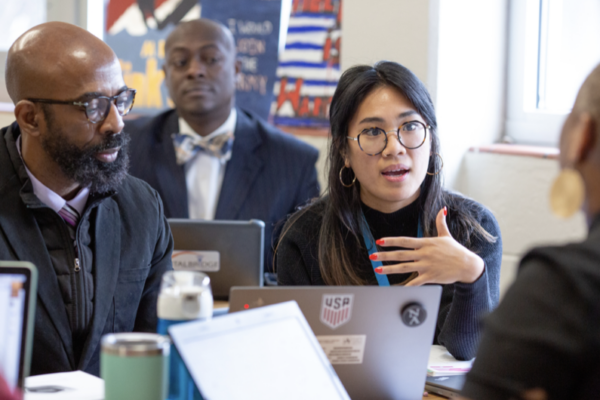With schools severely disrupted by the coronavirus pandemic, effective education advocacy on behalf of disadvantaged students is more important than ever. Yet, success in education advocacy is often hard to come by and those seeking change will fail more often than they succeed. Tipping the odds of change in the favor of education advocates requires a careful study of what works in the field.
At AdvocacyLabs, a joint initiative between the FutureEd think tank at Georgetown University and the education advocacy network 50CAN, we have made use of exclusive data from a decade of education advocacy campaigns to explore the connection between the inputs in campaign plans—goals, strategies, tactics, people and money—and the outcomes local leaders seek. The results help shed light on the ways that advocates can use these insights to increase their odds of success.
In our recently released study, we look at 274 education advocacy campaigns in 17 states over the past 10 years. The campaigns were planned and tracked through a comprehensive online platform called ExpeditionAdvocacy.org that captures the goals of each campaign, the specific actions taken by the advocacy leaders and the results of their efforts.
By comparing the inputs of these campaigns to their results, we can provide a unique window into what actually works in the often-opaque world of advocacy.
We find that campaigns using a social movements strategy—where a large number of people build power to secure change by joining together around a common goal—were successful 57 percent of the time, or eight percent more frequently than average and 11 percent more than an expert communities strategy focused on using people with authoritative knowledge to influence the public debate.
[Read More: Goals, Strategies, Tactics, People and Money: A Decade’s Worth of Education Advocacy Insights]
When we look at the tactics within a plan—the specific steps taken to secure a goal—we find that the most successful tactic proved to be grassroots organizing, where a group of people work together to identify shared problems and find solutions. The win rate for campaigns using grassroots organizing was 13 points above average. By contrast, campaigns using policy analysis as their primary driver had a win rate 13 points below average.
When it comes to the people carrying out these campaigns, we found that local leaders with political experience were 16 points more likely to win in their campaigns than those with backgrounds strictly in the world of education.
Finally, we found that money does matter in getting wins. Large campaigns (with budgets of $750,000 or more per year) had a win rate of 56 percent, while medium-sized campaigns ($350,000 to $750,000) won 48 percent of the time and small campaigns (less than $350,000) won just 33 percent of the time. At the same time, while winning less often those small campaigns had a better return on investment. The cost per win of smaller campaigns ($219,397) was half that of larger campaigns ($390,377).
While there is no simple formula to guarantee success in education advocacy, our research shows that a focus on proven strategies and tactics—combined with smart recruiting and smart use of money—add up to a big increase in the odds of success.

